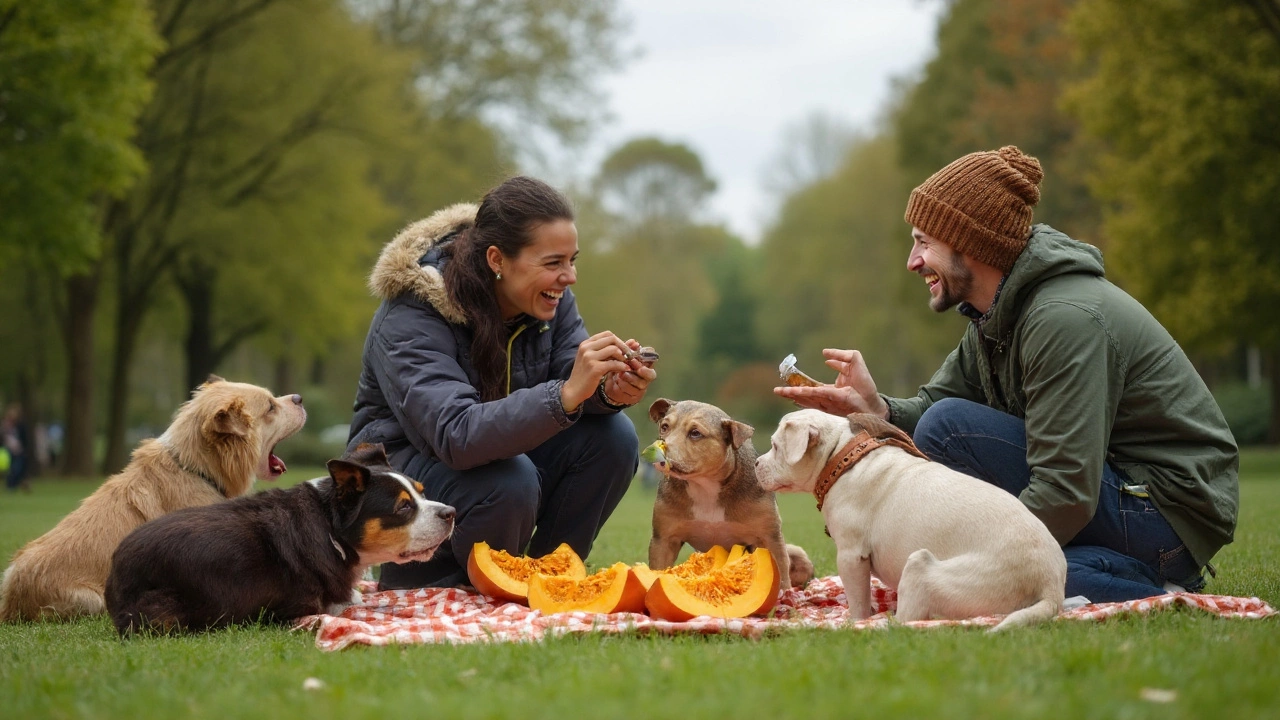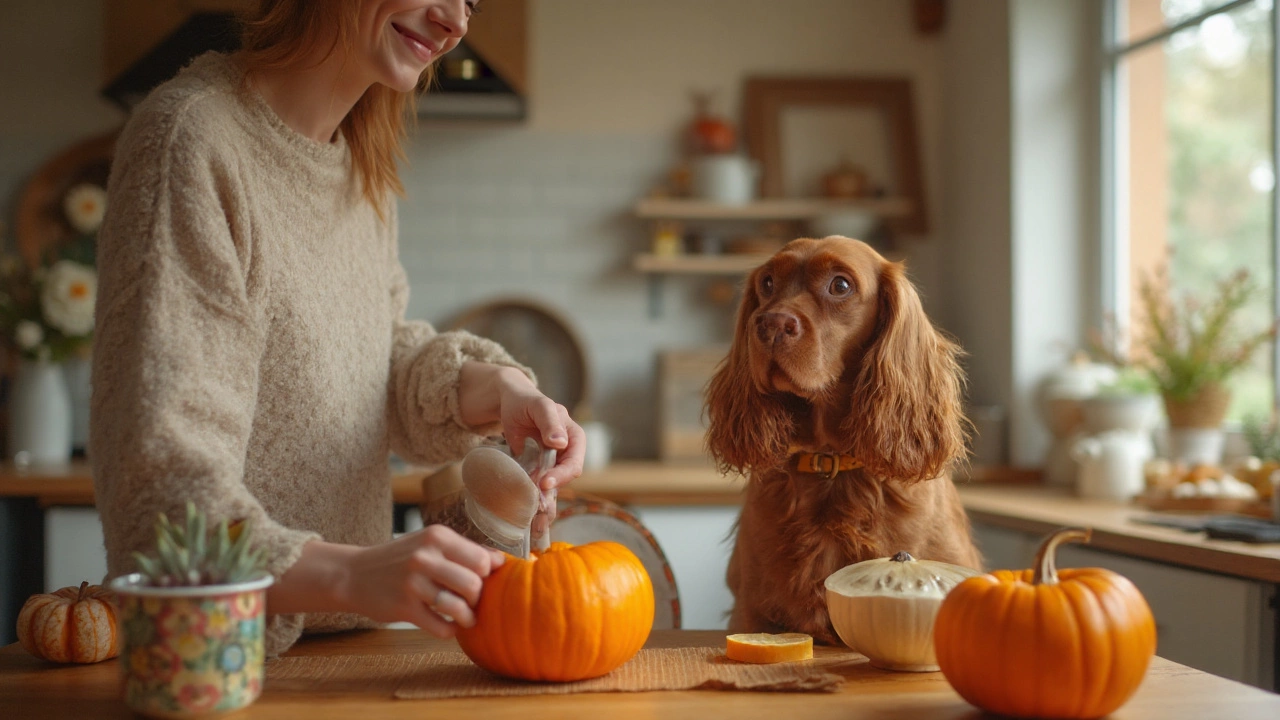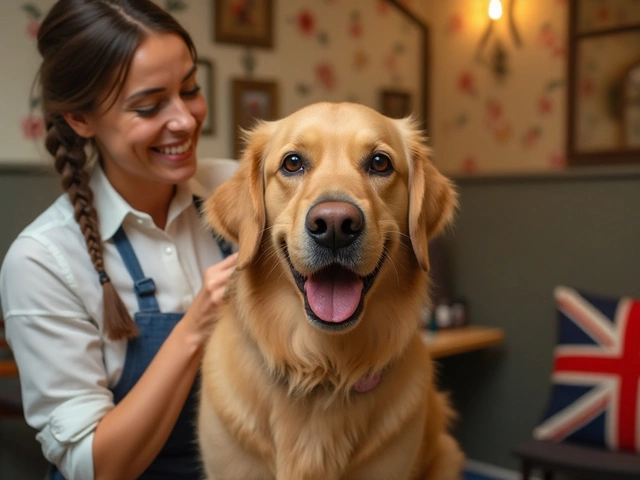Ever noticed your dog eyeing a slice of pumpkin pie or hovering hopefully while you prep that big orange squash? It’s pretty common these days to see pumpkin popping up in dog treats, kibble, and even vet recommendations. Loads of people praise pumpkin as a wonder food for dogs—good for digestion, low in calories, and tasty, too. But no superfood comes without a flip side. Sometimes, giving your canine buddy pumpkin can leave them with more than just a cute orange-stained grin. Let’s dig into exactly what can happen if you go too heavy on the pumpkin—and how to sidestep those not-so-sweet side effects.
Why Do Dogs Get Pumpkin, Anyway?
Pumpkin gained a reputation as a stomach soother practically overnight, and now it’s not rare to see folks spooning it into their dog’s breakfast or dinner. The main reason? It’s loaded with fiber and water, both of which help with digestion. Got a pup with loose stools? Some canned pumpkin can firm things up in a hurry. If things are slow on the other end—yep, pumpkin’s fiber can help with mild constipation, too. That’s one pretty handy vegetable.
Pumpkin is also packed with beta carotene (that’s what gives it its color), which the body turns into vitamin A, a nutrient important for skin, immune, and eye health. It’s got potassium for muscles, vitamin C for immunity, and tiny amounts of iron, magnesium, and other minerals. Not bad for a humble squash stuck on the porch every autumn.
But here’s where things get tricky. Dogs aren’t small humans, and the same rules around what’s healthy and safe don’t always transfer from us to them. Dogs do need some vitamin A—but not too much. Fiber is good, but pushing it too far can backfire. Even water content can leave some pups feeling less than chipper.
Ask any experienced vet and you’ll hear that while pumpkin’s benefits are real, there’s always such a thing as too much of a good thing. As veterinary nutritionist Dr. Lisa Freeman put it:
“Pumpkin in moderation is generally safe for most dogs. It’s the quantity—and what you put with it—that can cause problems.”So what can go wrong?

The Common Side Effects of Pumpkin for Dogs
So you’re sold on pumpkin’s supposed magic and start mixing big spoonfuls into your dog’s dinner bowl. What could possibly go wrong? Well, you might end up scrubbing the carpet—or calling your vet.
The most common side effect of too much pumpkin is digestive upset. Because pumpkin is high in fiber, excessive amounts can quickly switch from fixing diarrhea or constipation to actually causing it. You might see your dog develop loose stools—or full-on diarrhea—if they eat too much pumpkin, especially if their belly isn’t used to it. In some cases, lots of pumpkin can have the opposite effect and make a dog constipated, especially if they aren’t drinking enough water.
Next up: pumpkin overload can mess with nutrient absorption. Picture filling up on salad before a steak dinner. Your pup’s gut is busy channeling all that fiber, leaving less room to absorb vital protein, fats, and other minerals from their main food. Over time, they could miss out on essentials, even if their bowl is full every night.
Vitamin A toxicity is a real concern, too. Pumpkin is rich in vitamin A, which dogs need but only in the right ratios. Overdoing it for weeks or months can build up slowly and may lead to symptoms like joint pain, bone changes, and even liver problems. While you’d have to feed a truly heroic amount of pumpkin to see this happen, it’s not impossible—especially with large breeds or folks relying on pumpkin daily.
If you opt for canned pumpkin pie filling instead of pure pumpkin, that’s another can of worms. Most pie fillings have sugar, spices, and sometimes even xylitol (a sweetener that is deadly to dogs in very small amounts). Canned pumpkin puree is typically safe—but double check the label. Look for “100% pumpkin” and nothing else.
Dogs with existing medical conditions, like diabetes or kidney disease, need careful guidance. The carbohydrates in pumpkin can affect blood sugar, and its high potassium level can be risky for dogs with kidney trouble. Always give your vet a heads-up first, especially if your dog is on medication or a special diet.
Some less common reactions? Pumpkin allergies. Pretty rare, but they can show up as itchy skin, hives, or even vomiting. Weird, but not impossible—just like anything else in a dog’s bowl. If it happens, obviously, stop giving pumpkin and talk to your vet.
Pro tip: Switch things up slowly. Even healthy fiber can throw a sensitive digestive system for a loop if you dump it in all at once. Start with a spoonful, not a scoop, and watch your pup closely for a couple days.

Smart Tips for Safe Pumpkin Feeding
If you’re convinced the risks are manageable and still want to get those pumpkin benefits—good call. With the right approach, pumpkin can be a fun, tasty addition to your dog’s diet. You just need to keep an eye on a few details.
First, go for pure, canned pumpkin. Skip pumpkin pie filling, cookies, or anything with added sweeteners or spices, especially nutmeg—dogs can’t process it well, and it’s toxic in high amounts.
Serving size matters. For small dogs, stick to about half a teaspoon to a teaspoon a day. Medium dogs do fine with a couple of teaspoons. Large breeds might get a tablespoon or two. There’s no magic number, but these guidelines prevent you from going wild with it. Too much can quickly lead to side effects, and besides, most dogs don’t need a huge helping to get the digestive benefits.
If your dog’s on a special diet or taking medication—especially for tummy, pancreas, or kidney issues—check in with your vet first. They’ll factor in your pup’s size, energy level, and condition before giving the green light.
Want to make it a treat? Freeze little cubes of pumpkin puree in your ice tray for a summer snack. Or bake a batch of pumpkin dog biscuits (just search for simple recipes that skip salt, sugar, or added fats). You get that seasonal flavor, and your dog gets a fun treat, without risking side effects from overfeeding.
Keep an eye out for weird bathroom changes. If your dog’s stool turns runny, frequent, especially smelly, or if they start straining to go, back off the pumpkin and talk to your vet. Those are signs their gut is waving the white flag on fiber overload.
If you have a puppy or a dog with food allergies or sensitivities, test with a tiny portion first. Allergic reactions are rare, but better safe than sorry. Nothing ruins the fun like an itchy dog at midnight.
- Always use pumpkin side effects for dogs as a starting point for research.
- Introduce gradually—don’t just scoop it into the bowl.
- Stick to plain pumpkin; skip sugar, spice, and everything nice.
- Watch your dog’s reaction and bathroom habits closely.
- Consult your vet if in doubt, especially with medical conditions.
Most owners think it’ll never happen to them, but even “safe” foods can throw a curveball when you least expect. So keep your approach balanced, your portions small, and your treats fun but sensible. Done right, pumpkin stays in the hero column—not the villain, even if your dog’s grin turns slightly orange for a few days.







